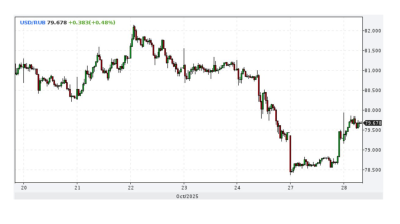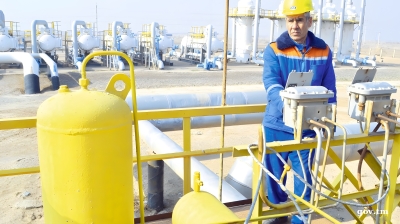Turkish lira tests best level for two weeks after economy officials signal possible further rate hike

The Turkish lira (TRY) tested below 4.45 against the USD during trading hours on May 30 after a series of meetings held with market players in London by Turkey’s central bank governor Murat Cetinkaya and Deputy Prime Minister Mehmet Simsek helped to improve sentiment and allay fears about the direction of monetary policy under President Recep Tayyip Erdogan. The rate was the best recorded by the currency in two weeks.
The TRY was trading at 4.5073, 0.94% stronger day on day, as of 17:00 local time while the benchmark BIST-100 was down 1.27% to 103,781.
Following the 300-basis point emergency hike introduced on May 23, Turkey is prepared to raise interest rates again if its double-digit inflation accelerates, two money managers who met with Cetinkaya and Simsek, the head of the Turkish government’s economic team, said they had been informed, according to one report.
Further tightening would depend on the May inflation data to be released on June 4 and Turkey would not resort to introducing capital controls, the people, who asked to remain anonymous, also reportedly said, citing the governor and deputy PM.
A Reuters poll showed on May 30 that respondents expect monthly inflation to jump 1.45 percent in May. That would translate into an annual increase of nearly 12 percent. “The impact of the devaluation of the lira is slowly being seen in inflation,” Ozlem Bayraktar, chief economist at Tacirler Investment told Reuters. Annual inflation could rise toward 13.5 percent in July before ending the year at more than 11 percent, she said.
Also on May 30, the central bank monetary policy committee (MPC) released the minutes of its emergency meeting held on May 23. “Inflation expectations, pricing behaviour and other factors affecting inflation will be closely monitored, and, if needed, further monetary tightening will be delivered,” the MPC was recorded as stating.
Markets now await the next MPC meeting, scheduled for June 7.
Meanwhile, macro outlook reports released on May 30 by Moody’s Investors Service and the OECD drew a contradictory picture of Turkey’s 2018 growth forecasts. Moody’s said in the May Update of its Global Macro Outlook: 2018-19 that it had cut its 2018 GDP growth forecast for Turkey to 2.5% from the previous 4%.
The OECD, however, has stuck to a higher figure. “Following a strong recovery in 2017 and turbulence in spring 2018, [Turkey’s] economic growth is set to slow but to stay around 5% in 2018 and 2019,” the OECD said in the May edition of its Economic Outlook report.
In their meetings with money managers in London, Cetinkaya and Simsek have reportedly dialled back on Turkish President Recep Tayyip Erdogan’s combative message to markets on interest rate policy, insisting the central bank has freedom to act to defend the lira.
Earlier this month, in meetings with money managers in London and during an interview on Bloomberg TV, Erdogan implied he was about to take over the reins of monetary policy after the June 24 election. He reiterated his unconventional view that low interest rates were the way to tame rampant inflation.
The comments compounded the problems of the lira—one of the worst performing emerging market currencies in the year to date given domestic and international pressures—and its losses accelerated. It sank as far as an all-time low of 4.9294 on May 23, leading to the emergency rate hike.
Markets have been so unsettled by the nosedive taken by the TRY that there have been strong warnings that Turkey could be headed for an emerging markets currency-and-debt crisis.
Data

Russia’s manufacturing PMI falls to its lowest level since May 2022 in October
Russia’s manufacturing sector saw a deeper contraction in October, with output, new orders, and business confidence all weakening, according to the latest Purchasing Managers’ Index (PMI) data from S&P Global, published on November 1.

Czech growth accelerates as domestic demand-side pressure builds
The Czech economy delivered an unexpected acceleration in the third quarter, marking a clear shift from its earlier position as a regional underperformer to one of Central and Eastern Europe’s fastest-growing economies.

Eurobonds of Istanbul-listed Zorlu units offer attractive yields amid rating downgrades and no default expectation
Debut paper currently offering 14-15% yield.

Ruble strengthens as sanctioned oil companies repatriate cash
The Russian ruble strengthened after the Trump administration imposed oil sanctions on Russia’s leading oil companies, extending a rally that began after the Biden administration imposed oil sanctions on Russia in January.



